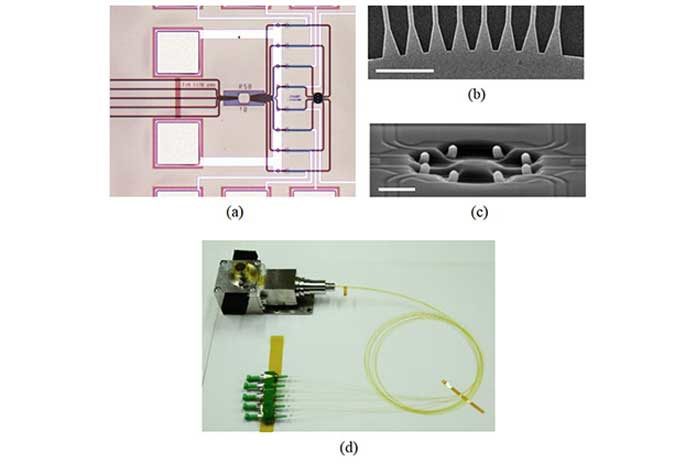In our communication-centered era, Internet traffic has been expanding rapidly. The huge measures of information that travels through the Internet are empowered by immense backbone networks, as a rule including a large number of associations conveyed utilizing optical communication technology.
Anticipating that this expansion in data flow won’t stop at any point in the near future, specialists worldwide are hunting down approaches to additionally create and improve optical communications.
Scientists at Tokyo Tech have fabricated a multiplexer/demultiplexer module based on a property of light that was not being exploited in communications systems: the optical vortex. Such devices will be crucial for improving optical networks, which are the backbone of today’s Internet so that they can meet the traffic demands of tomorrow.
The newly developed technique is multiplexing in modern electronic communications, which can maximize the utilization of the available bandwidth. Multiplexing comprises in packing numerous signs into a single signal that can be sent through a mutual medium, for example, an optical fiber.
The got perplexing sign is then demultiplexed at the beneficiary and every basic flag is directed to its expected destination. Various multiplexing approaches are utilized these days to accomplish velocities of more than 100 gbits/s through optical systems.
Recent promising methods involve taking advantage of properties of light not conventionally used for communication to encode independent signals. For example, the polarization of light has already been employed and practical applications have been proposed.
Scientists focused on a characteristic of light called the “optical vortex”, that can be exploited.
Assistant Professor Tomohiro Amemiya said, “The optical vortex carries the orbital angular momentum of light and can be used to multiplex signals by assigning each signal to a light wave of different momentum. The application of the optical vortex for signal multiplexing represents untapped territory with great potential.”
Encoding signals into light waves with different optical vortexes and transmit them requires designing and implementing the necessary circuitry for both the multiplexing and demultiplexing operations. Thus, scientists designed and fabricated an orbital angular momentum multiplexing/demultiplexing module.
Their device was fabricated so as to take five independent signals as input. Using a combination of two tiny circuit structures, called a star coupler and an optical-vortex generator, each of the five signals is “encoded” with a unique optical angular momentum. The output signal consists of a combination of the five signals, and the receiver circuit only has to carry out the multiplexing operation in reverse (demultiplexing) to end up again with the five independent signals.
The module’s curved tips of the waveguides of the optical-vortex generator were made of silicon and measured a few micrometers.
Amemiya said, “Devices and multiplexing techniques such as the ones demonstrated by the team will be crucial in the very near future. It is certain that the demand for high capacity systems with low cost and less energy losses will further increase in the future. Fortunately, more ways to improve current communications systems by exploiting the untapped properties of light will surely become available to bring us one step forward in our communication era.”
The study is reported in the journal Optical Society of America.
